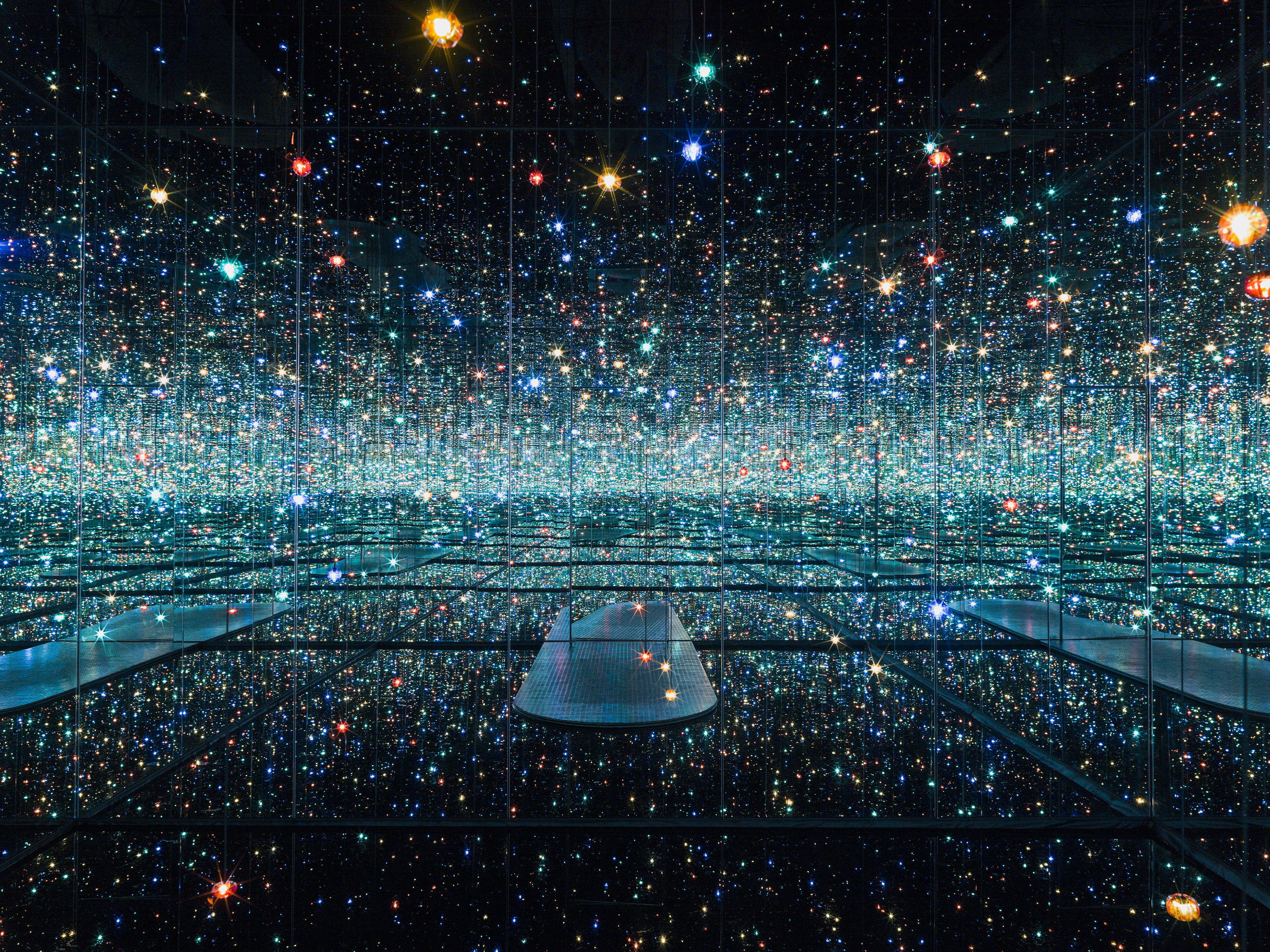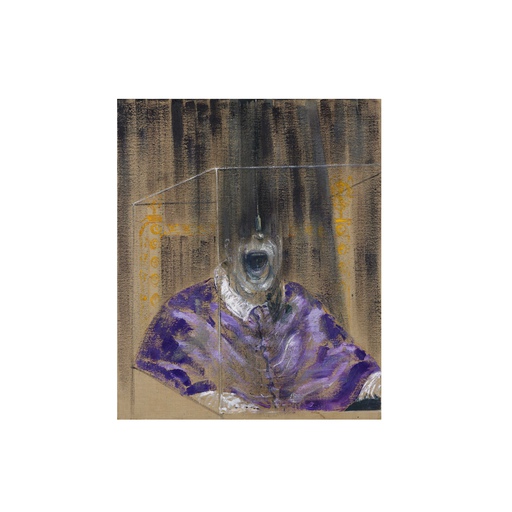Throughout her career, Yayoi Kusama has built work from the arrangement and collection of coloured dots. Whether on pumpkins, skateboards, clothing or her body, in clean print-quality shapes, blurred ink spots or closely multiplied patterns. Perhaps more than any living artist, she has mastered the assembly of complex, multi-layered images from tiny individual points of color. While her work echoes with visual elements found in traditional Aboriginal painting, French impressionism or op-art, the images that Kusama produces are immediately recognisable as hers - and hers alone. This visual immediacy and mastery of color explains how a reclusive, 89-year-old Japanese woman, who has voluntarily lived in a psychiatric institution since 1977, is habitually referred to as the most Instagrammable artist in the world.
For such a simple symbol – literally, ‘something a child could do’ – the dot has a remarkably powerful, adaptable visual quality. In some deployments, it’s an optical effect to create the sense of light shimmering or moving across the canvas. It can in-fill a shape or grid, resolving into an image as the viewer moves away and refocuses their eye. It can create an effect of a shining sun or a flickering, star-filled night sky. Kusama’s repeated deployment of the shape explored all these techniques and effects, the impact of her work building up with the repetition of the dots.
However, where other artists limited themselves to two-dimensional arrangements of dots, Kusama has repeatedly explored ways of collecting their patterns into three-dimensional, immersive environments.
It’s generally accepted that Kusama’s attempts to create these ‘infinity rooms’ date back to 1965. ‘In her first installation incorporating mirrors, her 1965 work Infinity Mirror Room: Phalli’s Field, Kusama arranged hundreds of soft, phallic forms in a roughly 25 square-metre mirrored room,’ writes author and curator Catherine Taft in Phaidon’s Kusama monograph .
‘Meant to be engaged with, the stuffed protuberances – which were multiplied through infinite reflection – enveloped the viewer, creating an almost psychosexual encounter with one’s own body and image.’
However, it was a year later that the ideas she has been exploring in her work – pattern, repetition, infinity, three-dimensional installation – coalesced in her work Peep Show or Endless Love. ‘A mirrored hexagonal room with coloured lights that flashed in time to piped-in rock and roll, Peep Show, like its bawdy namesake, was experienced by viewers through slots located at eye level,’ writes Taft. ‘Rather than ogling an anonymous “star” on the Peep Show’s stage, the only image one saw was one’s own – reflected ad infinitum in the mirrored walls, surrounded by blinking lights.’
 Yayoi Kusama, Infinity Mirrored Room –The Souls of Millions of Light Years Away, 2013 Wood, metal, glass mirrors, plastic, acrylic panel, rubber, LED lighting system, acrylic balls, and water 113 ¼ x 163 ½ x 163 ½ in. Courtesy of David Zwirner, N.Y. © Yayoi Kusama
Yayoi Kusama, Infinity Mirrored Room –The Souls of Millions of Light Years Away, 2013 Wood, metal, glass mirrors, plastic, acrylic panel, rubber, LED lighting system, acrylic balls, and water 113 ¼ x 163 ½ x 163 ½ in. Courtesy of David Zwirner, N.Y. © Yayoi Kusama
Kusama moved away from this artistic technique until her appearance at the 1993 Venice Biennale representing Japan. Since then, she has deployed her infinity rooms in a variety of styles: 1996’s Love Forever mapped endless LED hexagonal grids like a Daft Punk stage set; 2009’s Aftermath of Obliteration of Eternity saw floating golden lanterns filling the air; 2013’s Love Is Calling had an organic, naturalistic feeling with ultraviolet, cuddly shapes throwing out a blue-pink glow.
Infinity Mirrored Room – The Souls of Millions of Light Years Away - currently on show at The Broad in Los Angeles - is one of Kusama’s greatest infinity rooms . Foremost in the frame are a small number of larger colored lights. The mirrors place a grid over the image and both multiply and converge the lights as the ‘room’ recedes. As this blanket of lights becomes increasingly dense, the colors merge through a futuristic green and into a clarifying white. A layer of water at ground level allows the bottom of the image to fall away, the lights from the sky reflected below. The effect is both enveloping, but also isolating – on entering the room and the door closing shut, your sense of perspective recalibrates and the ground seems to fall away beneath you. The image neither begins nor ends, and cannot be constrained by any frame.
In 1998, Kusama told Index magazine of the quest to create a sense of infinity in her work, and where it had first begun. ‘As I was painting, absorbed,’ she said, ‘I realised that the new was spilling over the desk. I was painting on the floor. And then, one day, when I woke up, I found a red net covering a window. The entire room was covered with red net.’
Two-dimensional painting could only take Kusama so far in attempting to recreate and capture this vision for her audience. But by thinking and building bigger, into three dimensions, reflected surfaces, geometric patterns of light and endlessly unfolding horizons, she finally managed it. A fully immersive artistic experience is built from the simplest, most basic shape – the dot – and the end result is like nothing else in art today. Or as Kusama herself put it, in an interview with the Broad:
"Eternal unlimited universe, love for humanity, and longing for peace in the world—these concepts become increasingly serious through the development of my philosophy of life and art."
Infinity Mirrored Room – The Souls of Millions of Light Years Away (2013) is now open at The Broad, Los Angeles , with reservations for a timed booking required in advance. Kusama’s Looking For Eternity (2017) is also on view at the gallery , with no reservation required.


























